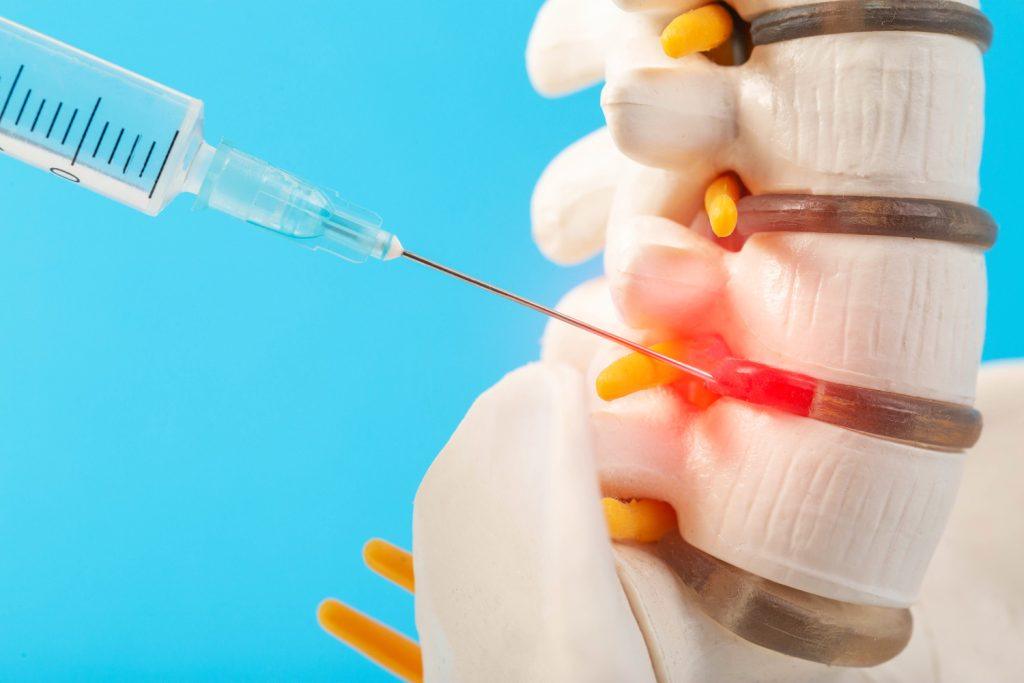Understanding the Success Rate of SI Joint Injections for Back Pain Relief

When you have back pain, you need to find healthcare solutions that can give you long-lasting pain relief. SI joint injections are among your best bets.
They are a common procedure that can reduce inflammation and relieve pain in your lower back area. However, are they really effective?
In this blog, we will discuss how SI joint dysfunction can lead to back pain and if SI joint injections are really effective. At Surgery Consultants of Florida, our mission is to ensure that victims of auto accidents, slips & falls, and other incidents can live a pain-free life.
Can SI Joint Dysfunction Cause Back Pain?
Your SI (sacroiliac) joint is the one connecting your pelvis and spine. It is very important because it helps with stability and shock absorption during your daily activities.
Although it doesn’t move much compared to other joints, any irritation or misalignment in this part can trigger discomfort, such as chronic back pain in the lower back, buttocks, or hips.
SI joint dysfunction—a condition that happens when the SI joint doesn’t move properly—is one of the common causes of back pain. You could suffer from this because of injuries, repetitive strains, or arthritis.
If your joint dysfunction is severe, walking, sitting, and other normal movements can become difficult to do. SI joint injections can help in providing you back pain relief that lasts.
Are SI Joint Injections Effective?
Are SI joint injections really effective in relieving back pain? The answer is yes. They are commonly used to target pain caused by SI joint dysfunction. However, they are not 100% efficient.
How Successful are SI Joint Injections?
Numerous studies show that sacroiliac joint injections have a success rate of 50% to 70%. Some studies even revealed higher efficiency rates. The accuracy rates improve when imaging tools, such as CT scans and fluoroscopy are used.
How SI Joint Blocks Provide Relief
SI joint injections are conducted by injecting a mixture of steroids and local anesthetic into the sacroiliac joint. This is why they are also called SI joint blocks since they are intended to “block” discomfort.
SI joint blocks serve two purposes: to confirm if the joint itself is in pain and to reduce inflammation to relieve symptoms if so. The pain relief they provide is only temporary. However, many patients can experience relief for several weeks or even months, depending on the severity of their SI joint conditions.
Factors Affecting SI Joint Block’s Success
The efficiency of SI joint blocks depends on numerous factors. Knowing what these factors are can help you have a more realistic expectation when undergoing such procedures.
Health and Lifestyle
The success rate can be affected by your health and lifestyle. Conditions, such as sacroiliitis and arthritis can lead to more inflammation, making back pain harder to treat. Weight, bad health habits, and other lifestyle factors can also affect its effectiveness.
Diagnosis Efficiency
SI joint blocks also rely on diagnosis efficiency. This means that if the diagnosis is inaccurate, then the success rate will be reduced.
Procedure Precision
Another factor that affects the effectiveness of these injections is precision. This is why doctors commonly use CT scans and other image-guided methods for more precision. With better accuracy, risks are reduced and success rate is increased.
Comparing SI Joint Injections With Other Treatments
Although sacroiliac joint injections are quite effective, it is still important to explore other back pain relief options. If you want a minimally invasive option, then SI joint injection is one of your best choices. It can provide pain relief without needing large incisions.
However, some back pain cases need other treatments to achieve pain relief.
Surgeries
Complex back pain cases may need invasive procedures, such as lumbar laminectomy or lumbar microdiscectomy. Unlike SI joint blocks, these surgeries address herniated discs and nerve compression.
Other invasive surgeries you might need are posterior lumbar fusion and lumbar spine interbody fusion, which stabilize the spine. Aside from these, you might also need trans lateral interbody fusion (TLIF) or anterior lumbar fusion to preserve mobility and stability while relieving the pain.
Non-Surgical Procedures
You could also opt for non-surgical procedures, such as rhizotomy. This is another minimally invasive operation that targets nerve pain. How? By destroying nerve fibers using electrical current or chemical burns to block pain.
Cervical Spine Treatments
Back pain results from numerous conditions, such as inflammation or damage in the cervical spine. When this happens, you’ll need cervical laminectomy, cervical discectomy, and other cervical spine procedures to remove damaged discs or relieve compression. If you want to have better stability, you’ll need anterior cervical disc fusion to fuse vertebrae in the neck.
Combining Treatments
Usually, SI joint injections are combined with surgeries and other treatments for better outcomes. However, cases that only rely on SI joint blocks have a faster recovery time.
Aside from combining SI joint blocks with other treatments, you can also pair them with weight management, exercise, and a healthy diet to ensure longer pain relief.
Need Trusted SI Joint Injections?
If you’re looking for trusted SI joint injections, trust us here at Surgery Consultants of Florida. Our team specializes in innovative SI joint blocks and other treatments. We are committed to bringing patient-focused care, ensuring that every treatment plan meets all your needs.
We have 30 years of medical experience, helping victims of slip & falls, car accidents, motorcycle incidents, and other trauma-related incidents. Not only do we bring reliable healthcare solutions, but we also prioritize clear communication so that all your concerns and needs are heard.
Our Services
Aside from SI joint injections, we also offer other reliable pain relief treatments, such as shoulder surgery, cervical discectomy, facet joint injections, rhizotomy, etc. To ensure accurate diagnosis, we use advanced imaging tools like CT scans and fluoroscopy.
If you’re in pain because of a car accident or other trauma-related incidents, please contact us today. Our team will be there with you every step until you achieve a pain-free life again.
Warning: urlencode() expects parameter 1 to be string, array given in /www/wwwroot/surgeryconsultantsofflorida.com/wp-includes/formatting.php on line 5693

